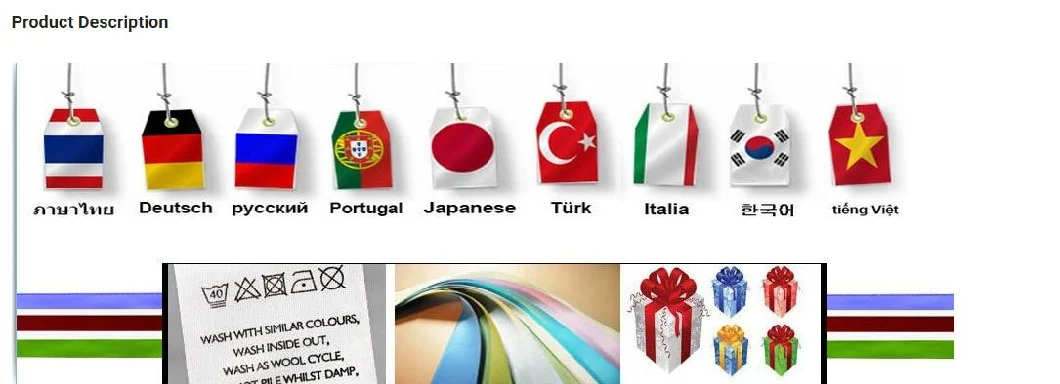Informations de base.
| Numéro de modèle. | Série MA |
| Marque déposée | MONEL |
| Origine | Chine |
| Code SH | 3215110010 |
| Capacité de production | 5000 tonnes |
Description du produit

Encre de sérigraphie en silicone série MA
FICHE DE DONNÉES DE SÉCURITÉ CHIMIQUE (FDS)
Aperçu des risques de la partie II
Catégorie de danger :
Niveau de danger : Toxicité aiguë - orale : Catégorie 4
Corrosion/irritation cutanée : Catégorie 2
Blessure oculaire grave/irritation oculaire : Catégorie 2A
Allergie cutanée : Catégorie 1
Risques chroniques pour le milieu aquatique : Catégorie 2
Marquage des dangers et consignes de prévention :
Marquage:
Panneau d'affichage : avertissement
Description du niveau de danger : H315 provoque une irritation cutanée
H319 Provoque une sévère irritation des yeux
H411 Effets néfastes à long terme et persistants sur les organismes aquatiques
Précautions:
La prévention:
P261 Éviter d'inhaler des poussières/fumées/gaz/fumées/vapeurs/aérosols
P264 Veuillez nettoyer après avoir terminé l'opération
P270 Ne pas manger, boire ou fumer lors de l'utilisation de ce produit
P272 Les vêtements de travail contaminés ne doivent pas être sortis du lieu de travail
P273 Prévenir les fuites
P280 Porter des gants/vêtements/lunettes/masque à gaz de protection
Répondre:
P301 + P312 En cas d'ingestion, veuillez appeler le centre d'urgence pour obtenir des soins médicaux immédiats.
P302 + P352 Contamination cutanée : Laver avec du savon et beaucoup d'eau
P305+P351+P338 Contact avec les yeux : Rincer abondamment à l'eau pendant quelques minutes. Si cela vous convient, veuillez d'abord retirer les lentilles de contact et continuer à rincer.
P330 Rincer la bouche
P332+P313 Irritation cutanée : consulter un médecin/un traitement
P333+P313 En cas d'irritation ou d'éruption cutanée : consulter un médecin/suivre un avis médical.
P362 Enlever les vêtements contaminés et les nettoyer avant utilisation
P391 Collecter les déversements
Conserver en stockage : aucune donnée
Élimination : P501 Placer les conteneurs à déchets dans….
Partie III Composition/Informations sur la composition
Mélange de qualité la plus pure √
| Ingrédients dangereux | Contenu | Numéro d’enregistrement au Chemical Abstract Index (CAS) |
| Polydiméthylsiloxane | 80-95% | |
| Calcium | 5-10% | |
| Huile de silicone | 1-5% | |
Partie IV Mesures de premiers secours
Si vous avez des questions ou des symptômes qui persistent, veuillez consulter un médecin.
Contact avec la peau : Rincer la peau à grande eau.
Contact avec les yeux : Rincer immédiatement les yeux à grande eau pendant au moins 15 minutes et consulter un médecin.
Inhalation : Transférer immédiatement le patient à l'air frais. Si la respiration s'arrête, pratiquez la respiration artificielle. Si la respiration est difficile, donnez de l'oxygène et consultez un médecin.
Ingestion : Ne pas faire vomir. Donnez immédiatement 2 verres d'eau. Si la personne blessée perd connaissance, ne rien manger par voie orale. Obtenez des soins médicaux.
11mg/LbrInhalation in rats(1h)LC50:>10.7mg/LbrPercutaneous absorption in rabbits LD50:>2,250mg/kgbrRat oral LD50:8,191mg/kgbrSubacute and chronic toxicity: Repeated inhalation toxicity in animals includes reduced weight gain, decreased absolute and relative weight of the liver, and degeneration of the epithelium of the olfactory organ (tissue of the nose). The toxicity of repeated ingestion in animals includes weight loss, but no pathological changes were found.brIrritation: This mixture is a mild skin irritant and a moderate eye irritant.brSensitization: Not an animal skin sensitizing substance.brMutagenicity: Animal experiments or bacterial culture tests do not cause genetic damage, but positive in a mammalian cell culture experiment.brTeratogenicity: Animal experiments have shown that this substance does not cause developmental and reproductive toxicity.brCarcinogenicity: Components in this substance with a concentration equal to or higher than 0.1% are not listed as carcinogens by IARC, NTP, OSHA, or ACGIH.brOther: The experiment of exposure to 60 ppm for 4 hours at a time found that the animal's cornea was turbid and the distance from the cornea to the anterior surface of the lens temporarily increased. An experiment in which 10 uL of this substance was dropped into the eyes of animals after a single exposure showed that this substance caused corneal opacity. Administration of 10-100 uL of a similar mixture causes corneal opacity, temporary thickening, and temporary paralysis of the cornea. An animal experiment with skin exposure of about 60 mg/kg found a temporary increase in the distance from the cornea to the anterior surface of the lens.brPart XII Ecological InformationbrEcotoxicity:brAquatic toxicitybrCyprinidae small fish 96h LC50: 18-24mg/L, moderate toxicity.brDaphnia 48h LC50: 112-150mg/LbrNon Biodegradability:brBioenrichment or bioaccumulation:brOther harmful effects:brPart XIII Waste DisposalbrNature of Waste: Hazardous wastebrWaste disposal method: Waste disposal must comply with the requirements of corresponding provincial/autonomous regional and local regulations. Recycled liquid for reuse or regeneration. Dispose of waste in a licensed incineration plant or biological treatment system.brDisposal precautions: Do not flush water or solid substances into surface water or sanitary water systems.brPart XIV Transportation InformationbrDangerous goods No.: Not listed in the Chinese national standard "Dangerous Goods List" (GB 12268-90), not listed by the United States Department of Transportation (DOT), the International Maritime Organization (IMO), and the International Air Transport Association (IATA) as dangerous goods.brUN Number:brPackage identification:brPackaging category:brPackaging method: plastic bucketbrTransportation precautions:brPart XV Regulatory InformationbrRegulatory information: Regulations on the Safety Management of Hazardous ChemicalsbrDetailed Rules for the Implementation of the Regulations on the Safety Management of Hazardous Chemicals (HLF [1992] No. 677)brRegulations on the Safe Use of Chemicals in the Workplace ([1996] LBF No. 423)brClassification and Marking of Commonly Used Hazardous Chemicals (GB13690-92)brLaw of the People's Republic of China on the Prevention and Control of Solid Waste PollutionbrGeneral Technical Conditions for Transport Packaging of Dangerous Goods (GB12463-90)brPart XVI Other InformationbrReferences: 1. Workplace Chemical Safety Management, State Economic and Trade Commission Bureau of Work Safety, 2000br2. New Safety Manual for Hazardous Materials, Chemical Industry Press, 2001br3. Complete Book of Safety Technologies for Hazardous Chemicals, Chemical Industry Press, 1997br4. Regulations on the Registration and Administration of Hazardous Chemicals, State Economic and Trade Commission, October 1, 2000brDate of filling: May 2022brFilled by: Shanghai Manci Industrial Co., LtdbrData Reviewed by: Shanghai Manci Industrial Co., Ltd brRevision description: It is revised and compiled in accordance with the Regulations on the Preparation of Chemical Safety Technical Instructions (GB16483-2000).brOther information:brThe information provided in this document is not a product indicator: it does not guarantee a specific nature. The information contained is based on our understanding of the operation, storage, and use of the product and provides general guidance on health and safety. It is not applicable to special or non-standard use of this product and not in accordance with instructions and recommendations.brThe technical information referenced in this document is currently reliable. When other knowledge and experience are gained, they should be revised again.br>


















